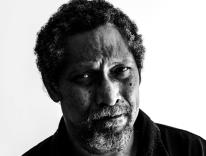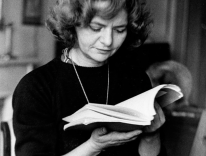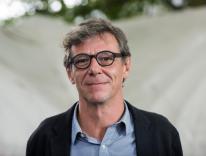Today’s young adults may be a mystery to many religious leaders, but one thing about them is clear: Compared with young adults of the preceding generation, fewer go to church. Thirty-one percent of young American adults attended religious services regularly in the 1970s; 25 percent attended in 2000. This decline has cost communities of faith 6.3 million young-adult members—a loss of twenty-one young adults per congregation. Picture your congregation on a Sunday morning, and subtract twenty-one young faces from the pews. It hurts, doesn’t it? It’s possible your congregation already has sustained a loss that large.
After the Baby Boomers is Princeton sociologist Robert Wuthnow’s call to action. If religious communities do not change, he argues, the decreasing participation of young adults in congregations will jeopardize the future of American religion. According to Wuthnow, if congregations are going to start attracting young adults, they first need to understand them.
After the Baby Boomers describes young adults’ perspectives and life experiences, analyzing their beliefs and practices pertaining to religion, politics, and family-rearing. It draws on extensive survey data and compares generations, denominations, and ethnic groups. The findings confirm some widely held views (young adults probably do prefer newer congregations) and disprove others (today’s young adults are not a lost cause—75 percent say “it is at least fairly important to them to grow in their spiritual life”). In marriage patterns, moral beliefs, and opinions on religion in society, this generation differs significantly from the baby boomers, and Wuthnow offers a thorough guide to the differences.
Wuthnow enlivens long stretches of data with jolts of opinion. A stickler for facts, he derides journalists for taking examples as trends, indulging hunches and then “look[ing] around until they find some anecdotal support for their story.” He bemoans the tendency in recent writing on American religion “to view everything as if it were a competitive game, like sports or the business world,” and tells how a pastor once asked him, at a gathering of clergy, how to “steal members” from other churches. He encourages religious leaders to start paying attention to young adults who are single, a growing population too long underserved by the church. The implicit accusation—that public discourse on religion is poor and sometimes distasteful—is troubling.
Much of After the Baby Boomers discusses young adults in general, but sections of the book will be particularly interesting to Catholic readers. The comparison of Hispanic and non-Hispanic Catholics is fascinating. Wuthnow finds young adults of the two groups differ dramatically in levels of education, employment, family patterns, and beliefs. Fifty-two percent of young-adult Hispanic Catholics believe “the Bible should be taken literally,” for example, compared to 15 percent of young-adult non-Hispanic Catholics. Young-adult Hispanic Catholics are also more interested than their non-Hispanic counterparts in social policies designed to help the poor, overcome discrimination against women, and achieve racial and ethnic equality. These interests are more often associated with the Catholic Left than with the conservatives, and one is left wondering whether such concerns might eventually inspire non-Hispanic Catholics and unite them with the Hispanics in their parishes.
Reading After the Baby Boomers feels a bit like walking around a museum with a curator. You know you are going to see everything. You know it is good for you, and for long stretches of time, you are absorbed. But you spend almost the same amount of time at every exhibit, be it bland (an assessment of young adults’ unchanging empathy levels) or riveting (young adults rejecting America’s “civil religion”). If I were to come back to the museum on my own, I might linger for hours at the exhibit on politics, and skip the orthodoxy wing altogether. Or maybe invite a priest or parish administrator to come along so we could discuss things as we went along.
Wuthnow’s concern for the reader’s education is palpable. He assails one with details, and takes particular joy in shattering common wisdom. This book will help older adults—whether parents or religious leaders—evaluate and improve their work with young people, while offering young adults themselves a chance to think critically about their generation. But ultimately After the Baby Boomers is more description than prescription. Though Wuthnow offers a few practical ideas for congregation leaders, he generally refuses to distill his data into sound bites and his analyses into recommendations. Jacqueline Wenger and the late Dean Hoge ended their 2003 book, Evolving Visions of the Priesthood, with six commentaries on their findings, and it would have been exciting to see Wuthnow use a similar model. Instead, he leaves his readers to think through how his data can improve congregational life. We will have to see what creative work After the Baby Boomers inspires—or do a little of that work ourselves.
Please email comments to [email protected] and join the conversation on our Facebook page.
Previous Story
Our Community, Our Choice
Next Story
How Fiction Fails


